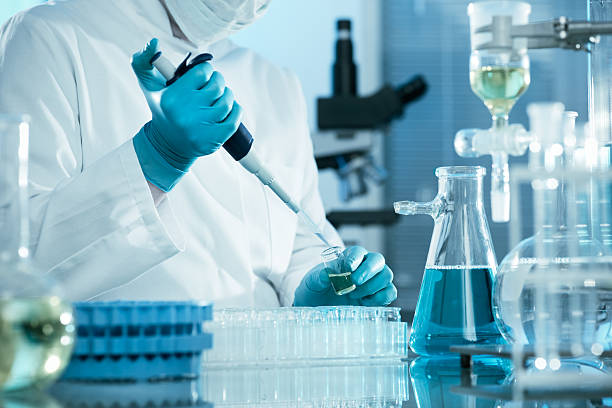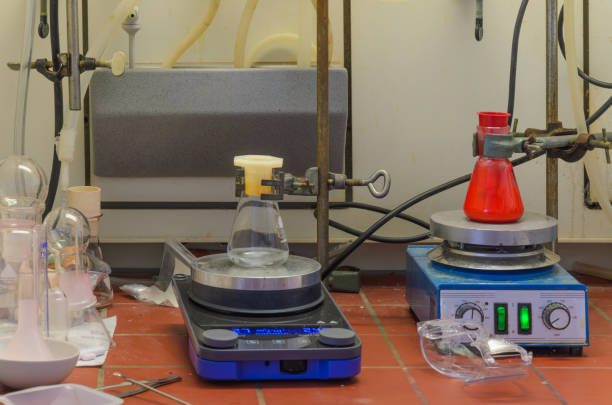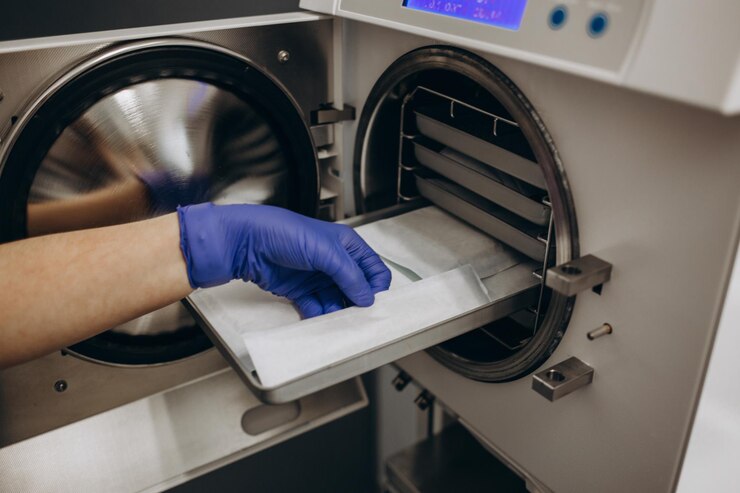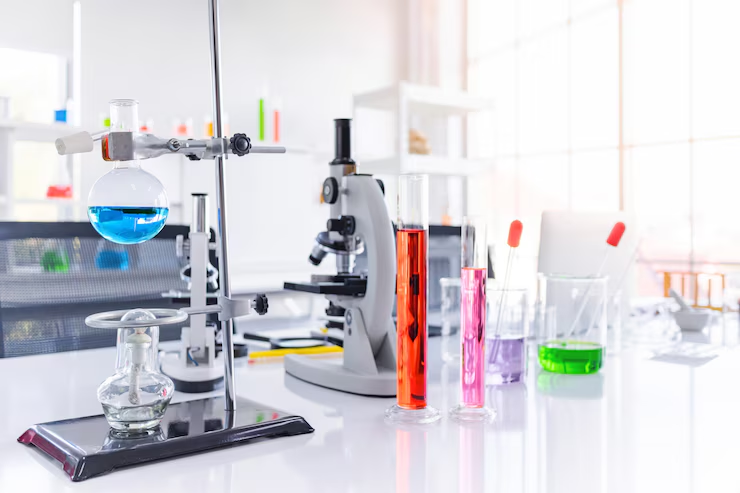In every scientific discovery, laboratory equipment serves as the backbone of precise measurement, safe experimentation, and reliable analysis. Whether in an educational institution, industrial research center, or pharmaceutical lab, the right tools not only enhance productivity but also ensure accuracy and safety. This complete guide explores the most essential lab instruments and equipment used across diverse scientific domains.
Introduction to Laboratory Equipment
Laboratory equipment refers to a broad range of tools and instruments utilized by scientists, researchers, and technicians to perform experiments, take measurements, and analyze samples. This category includes everything from simple glassware to sophisticated electronic devices. The effectiveness and outcomes of laboratory activities are greatly influenced by the proper selection, proper use, and regular maintenance of this equipment.
Categories of Laboratory Equipment

Laboratory tools can be broadly categorized into the following groups:
- Analytical Instruments
- Glassware and Plasticware
- Measuring Devices
- Safety Equipment
- General Purpose Equipment
Each category plays a specific role in laboratory operations. Let’s explore each in detail.
Essential Analytical Laboratory Equipment
1. Spectrophotometer
Used for measuring the intensity of light absorbed by a sample, spectrophotometers are crucial in chemistry, biology, and material science laboratories. They help determine the concentration of solutes and analyze color changes in reactions.
2. Chromatography Systems
Chromatography instruments such as HPLC (High-Performance Liquid Chromatography) and GC (Gas Chromatography) allow the separation, identification, and quantification of compounds. These systems are widely used in pharmaceuticals, environmental labs, and forensic science.
3. pH Meter
A pH meter precisely measures the acidity or alkalinity of a solution. Digital meters are more accurate than traditional litmus papers and are used in fields ranging from agriculture to biochemistry.
4. Centrifuge
Centrifuges separate substances of different densities by spinning them at high speed. Essential for biological labs, they are used to separate plasma from blood, precipitate proteins, and isolate cellular components.
Common Laboratory Equipment

1. Beakers and Flasks
Beakers, Erlenmeyer flasks, and volumetric flasks are fundamental tools for holding, mixing, and heating chemical substances. Their different shapes serve specific purposes in controlling reactions and preventing spillage.
2. Test Tubes and Racks
Test tubes are used for small-scale reactions and sample storage. Paired with test tube racks, they offer organized handling during experimental processes.
3. Pipettes and Micropipettes
Pipettes help in transferring measured volumes of liquids. In modern laboratories, micropipettes are indispensable for molecular biology experiments requiring extreme precision.
4. Burettes and Graduated Cylinders
Used in titration experiments, burettes provide precise volume dispensing. Graduated cylinders measure liquid volumes and are available in various sizes for accuracy.
Measurement and Calibration Tools
1. Balances
From analytical balances with sensitivity up to 0.0001g to top-loading balances for less sensitive tasks, weighing is a vital step in any experimental procedure.
2. Thermometers
Modern labs use digital thermometers and infrared thermometers to measure temperature accurately, crucial for reactions and sample preservation.
3. Manometers and Barometers
Used in physics and meteorological laboratories, these devices measure pressure levels and atmospheric conditions.
General Purpose Laboratory Equipment
1. Hot Plates and Magnetic Stirrers
Hot plates are used for heating solutions, while magnetic stirrers allow uniform mixing without manual intervention. Combined hot plate stirrers offer dual functionality.
2. Water Baths
Water baths provide a stable temperature environment for incubating samples, ideal for biochemical reactions and cell cultures.
3. Autoclaves

An autoclave uses steam under high pressure to sterilize laboratory tools, glassware, and media, ensuring a contamination-free workspace.
4. Fume Hoods
Fume hoods safeguard laboratory staff by venting dangerous fumes and vapors away from the workspace. They are crucial when handling volatile chemicals.
5. Incubators
Laboratory incubators maintain specific temperature and humidity levels to support the growth of microbial or cell cultures.
Laboratory Safety Equipment
1. Safety Goggles and Lab Coats
Protecting the eyes and body is crucial. Goggles shield from splashes and chemical exposure, while lab coats provide a protective barrier against spills.
2. Fire Extinguishers and First Aid Kits
Every lab must be equipped with fire extinguishers, first aid kits, and emergency showers to handle accidents swiftly.
3. Glove Boxes and Biosafety Cabinets
For working with toxic or infectious samples, biosafety cabinets and glove boxes offer a contained, sterile environment.
Advanced Laboratory Instruments
1. PCR Machines (Thermal Cyclers)
PCR machines are essential for DNA amplification. These are widely used in genetic research, forensic analysis, and diagnostics.
2. Spectroscopes and Mass Spectrometers
Spectroscopes help analyze the spectrum of light from a source, while mass spectrometers identify compounds by measuring their mass-to-charge ratio.
3. Electrophoresis Apparatus
This device separates DNA, RNA, or proteins by size through an electric field, pivotal in molecular biology and biotechnology labs.
Proper Maintenance and Calibration
To ensure optimal performance, regular calibration and maintenance of lab equipment are mandatory. Documentation, cleaning protocols, and scheduled inspections help extend the lifespan of costly instruments and improve reliability in results.
Choosing the Right Laboratory Equipment
When selecting laboratory tools, consider:
- Application-specific needs
- Precision and sensitivity requirements
- Budget and durability
- Compliance with industry standards
Investing in high-quality laboratory equipment not only enhances operational efficiency but also ensures reproducibility and credibility in scientific work.
Conclusion
Laboratory equipment forms the core infrastructure of any scientific endeavor. From basic glassware to advanced analytical machines, every tool has a unique role that contributes to successful experimentation and accurate data generation. For laboratories aiming to stay ahead in innovation and safety, investing in the right equipment and ensuring regular upkeep is non-negotiable.
What is the laboratory equipment?
In every scientific discovery, laboratory equipment serves as the backbone of precise measurement, safe experimentation, and reliable analysis. Whether in an educational institution, industrial research center, or pharmaceutical lab, the right tools not only enhance productivity but also ensure accuracy and safety. This complete guide explores the most essential lab instruments and equipment used across diverse scientific domains.
Introduction to Laboratory Equipment
Laboratory equipment refers to a broad range of tools and instruments utilized by scientists, researchers, and technicians to perform experiments, take measurements, and analyze samples. This category includes everything from simple glassware to sophisticated electronic devices. The effectiveness and outcomes of laboratory activities are greatly influenced by the proper selection, proper use, and regular maintenance of this equipment.
Categories of Laboratory Equipment
Laboratory tools can be broadly categorized into the following groups:
Analytical Instruments
Glassware and Plasticware
Measuring Devices
Safety Equipment
General Purpose Equipment
Each category plays a specific role in laboratory operations. Let’s explore each in detail.
Essential Analytical Laboratory Equipment
1. Spectrophotometer
Used for measuring the intensity of light absorbed by a sample, spectrophotometers are crucial in chemistry, biology, and material science laboratories. They help determine the concentration of solutes and analyze color changes in reactions.
2. Chromatography Systems
Chromatography instruments such as HPLC (High-Performance Liquid Chromatography) and GC (Gas Chromatography) allow the separation, identification, and quantification of compounds. These systems are widely used in pharmaceuticals, environmental labs, and forensic science.
3. pH Meter
A pH meter precisely measures the acidity or alkalinity of a solution. Digital meters are more accurate than traditional litmus papers and are used in fields ranging from agriculture to biochemistry.
4. Centrifuge
Centrifuges separate substances of different densities by spinning them at high speed. Essential for biological labs, they are used to separate plasma from blood, precipitate proteins, and isolate cellular components.
Common Laboratory Glassware and Plasticware
1. Beakers and Flasks
Beakers, Erlenmeyer flasks, and volumetric flasks are fundamental tools for holding, mixing, and heating chemical substances. Their different shapes serve specific purposes in controlling reactions and preventing spillage.
2. Test Tubes and Racks
Test tubes are used for small-scale reactions and sample storage. Paired with test tube racks, they offer organized handling during experimental processes.
3. Pipettes and Micropipettes
Pipettes help in transferring measured volumes of liquids. In modern laboratories, micropipettes are indispensable for molecular biology experiments requiring extreme precision.
4. Burettes and Graduated Cylinders
Used in titration experiments, burettes provide precise volume dispensing. Graduated cylinders measure liquid volumes and are available in various sizes for accuracy.
Measurement and Calibration Tools
1. Balances
From analytical balances with sensitivity up to 0.0001g to top-loading balances for less sensitive tasks, weighing is a vital step in any experimental procedure.
2. Thermometers
Modern labs use digital thermometers and infrared thermometers to measure temperature accurately, crucial for reactions and sample preservation.
3. Manometers and Barometers
Used in physics and meteorological laboratories, these devices measure pressure levels and atmospheric conditions.
General Purpose Laboratory Equipment
1. Hot Plates and Magnetic Stirrers
Hot plates are used for heating solutions, while magnetic stirrers allow uniform mixing without manual intervention. Combined hot plate stirrers offer dual functionality.
2. Water Baths
Water baths provide a stable temperature environment for incubating samples, ideal for biochemical reactions and cell cultures.
3. Autoclaves
An autoclave uses steam under high pressure to sterilize laboratory tools, glassware, and media, ensuring a contamination-free workspace.
4. Fume Hoods
Fume hoods safeguard laboratory staff by venting dangerous fumes and vapors away from the workspace. They are crucial when handling volatile chemicals.
5. Incubators
Laboratory incubators maintain specific temperature and humidity levels to support the growth of microbial or cell cultures.
Laboratory Safety Equipment
1. Safety Goggles and Lab Coats
Protecting the eyes and body is crucial. Goggles shield from splashes and chemical exposure, while lab coats provide a protective barrier against spills.
2. Fire Extinguishers and First Aid Kits
Every lab must be equipped with fire extinguishers, first aid kits, and emergency showers to handle accidents swiftly.
3. Glove Boxes and Biosafety Cabinets
For working with toxic or infectious samples, biosafety cabinets and glove boxes offer a contained, sterile environment.
Advanced Laboratory Instruments
1. PCR Machines (Thermal Cyclers)
PCR machines are essential for DNA amplification. These are widely used in genetic research, forensic analysis, and diagnostics.
2. Spectroscopes and Mass Spectrometers
Spectroscopes help analyze the spectrum of light from a source, while mass spectrometers identify compounds by measuring their mass-to-charge ratio.
3. Electrophoresis Apparatus
This device separates DNA, RNA, or proteins by size through an electric field, pivotal in molecular biology and biotechnology labs.
Proper Maintenance and Calibration
To ensure optimal performance, regular calibration and maintenance of lab equipment are mandatory. Documentation, cleaning protocols, and scheduled inspections help extend the lifespan of costly instruments and improve reliability in results.
Choosing the Right Laboratory Equipment
When selecting laboratory tools, consider:
Application-specific needs
Precision and sensitivity requirements
Budget and durability
Compliance with industry standards
Investing in high-quality laboratory equipment not only enhances operational efficiency but also ensures reproducibility and credibility in scientific work.
Conclusion
Laboratory equipment forms the core infrastructure of any scientific endeavor. From basic glassware to advanced analytical machines, every tool has a unique role that contributes to successful experimentation and accurate data generation. For laboratories aiming to stay ahead in innovation and safety, investing in the right equipment and ensuring regular upkeep is non-negotiable.
What is the common laboratory equipment?
1. Beakers and Flasks
Beakers, Erlenmeyer flasks, and volumetric flasks are fundamental tools for holding, mixing, and heating chemical substances. Their different shapes serve specific purposes in controlling reactions and preventing spillage.
2. Test Tubes and Racks
Test tubes are used for small-scale reactions and sample storage. Paired with test tube racks, they offer organized handling during experimental processes.
3. Pipettes and Micropipettes
Pipettes help in transferring measured volumes of liquids. In modern laboratories, micropipettes are indispensable for molecular biology experiments requiring extreme precision.
4. Burettes and Graduated Cylinders
Used in titration experiments, burettes provide precise volume dispensing. Graduated cylinders measure liquid volumes and are available in various sizes for accuracy.
What is the purpose of laboratory equipment?
In every scientific discovery, laboratory equipment serves as the backbone of precise measurement, safe experimentation, and reliable analysis. Whether in an educational institution, industrial research center, or pharmaceutical lab, the right tools not only enhance productivity but also ensure accuracy and safety. This complete guide explores the most essential lab instruments and equipment used across diverse scientific domains.
Introduction to Laboratory Equipment
Laboratory equipment refers to a broad range of tools and instruments utilized by scientists, researchers, and technicians to perform experiments, take measurements, and analyze samples. This category includes everything from simple glassware to sophisticated electronic devices. The effectiveness and outcomes of laboratory activities are greatly influenced by the proper selection, proper use, and regular maintenance of this equipment.
Categories of Laboratory Equipment
Laboratory tools can be broadly categorized into the following groups:
Analytical Instruments
Glassware and Plasticware
Measuring Devices
Safety Equipment
General Purpose Equipment
Each category plays a specific role in laboratory operations. Let’s explore each in detail.
Essential Analytical Laboratory Equipment
1. Spectrophotometer
Used for measuring the intensity of light absorbed by a sample, spectrophotometers are crucial in chemistry, biology, and material science laboratories. They help determine the concentration of solutes and analyze color changes in reactions.
2. Chromatography Systems
Chromatography instruments such as HPLC (High-Performance Liquid Chromatography) and GC (Gas Chromatography) allow the separation, identification, and quantification of compounds. These systems are widely used in pharmaceuticals, environmental labs, and forensic science.
3. pH Meter
A pH meter precisely measures the acidity or alkalinity of a solution. Digital meters are more accurate than traditional litmus papers and are used in fields ranging from agriculture to biochemistry.
4. Centrifuge
Centrifuges separate substances of different densities by spinning them at high speed. Essential for biological labs, they are used to separate plasma from blood, precipitate proteins, and isolate cellular components.
Common Laboratory Glassware and Plasticware
1. Beakers and Flasks
Beakers, Erlenmeyer flasks, and volumetric flasks are fundamental tools for holding, mixing, and heating chemical substances. Their different shapes serve specific purposes in controlling reactions and preventing spillage.
2. Test Tubes and Racks
Test tubes are used for small-scale reactions and sample storage. Paired with test tube racks, they offer organized handling during experimental processes.
3. Pipettes and Micropipettes
Pipettes help in transferring measured volumes of liquids. In modern laboratories, micropipettes are indispensable for molecular biology experiments requiring extreme precision.
4. Burettes and Graduated Cylinders
Used in titration experiments, burettes provide precise volume dispensing. Graduated cylinders measure liquid volumes and are available in various sizes for accuracy.
Measurement and Calibration Tools
1. Balances
From analytical balances with sensitivity up to 0.0001g to top-loading balances for less sensitive tasks, weighing is a vital step in any experimental procedure.
2. Thermometers
Modern labs use digital thermometers and infrared thermometers to measure temperature accurately, crucial for reactions and sample preservation.
3. Manometers and Barometers
Used in physics and meteorological laboratories, these devices measure pressure levels and atmospheric conditions.
General Purpose Laboratory Equipment
1. Hot Plates and Magnetic Stirrers
Hot plates are used for heating solutions, while magnetic stirrers allow uniform mixing without manual intervention. Combined hot plate stirrers offer dual functionality.
2. Water Baths
Water baths provide a stable temperature environment for incubating samples, ideal for biochemical reactions and cell cultures.
3. Autoclaves
An autoclave uses steam under high pressure to sterilize laboratory tools, glassware, and media, ensuring a contamination-free workspace.
4. Fume Hoods
Fume hoods safeguard laboratory staff by venting dangerous fumes and vapors away from the workspace. They are crucial when handling volatile chemicals.
5. Incubators
Laboratory incubators maintain specific temperature and humidity levels to support the growth of microbial or cell cultures.
Laboratory Safety Equipment
1. Safety Goggles and Lab Coats
Protecting the eyes and body is crucial. Goggles shield from splashes and chemical exposure, while lab coats provide a protective barrier against spills.
2. Fire Extinguishers and First Aid Kits
Every lab must be equipped with fire extinguishers, first aid kits, and emergency showers to handle accidents swiftly.
3. Glove Boxes and Biosafety Cabinets
For working with toxic or infectious samples, biosafety cabinets and glove boxes offer a contained, sterile environment.
Advanced Laboratory Instruments
1. PCR Machines (Thermal Cyclers)
PCR machines are essential for DNA amplification. These are widely used in genetic research, forensic analysis, and diagnostics.
2. Spectroscopes and Mass Spectrometers
Spectroscopes help analyze the spectrum of light from a source, while mass spectrometers identify compounds by measuring their mass-to-charge ratio.
3. Electrophoresis Apparatus
This device separates DNA, RNA, or proteins by size through an electric field, pivotal in molecular biology and biotechnology labs.
Proper Maintenance and Calibration
To ensure optimal performance, regular calibration and maintenance of lab equipment are mandatory. Documentation, cleaning protocols, and scheduled inspections help extend the lifespan of costly instruments and improve reliability in results.
Choosing the Right Laboratory Equipment
When selecting laboratory tools, consider:
Application-specific needs
Precision and sensitivity requirements
Budget and durability
Compliance with industry standards
Investing in high-quality laboratory equipment not only enhances operational efficiency but also ensures reproducibility and credibility in scientific work.
Conclusion
Laboratory equipment forms the core infrastructure of any scientific endeavor. From basic glassware to advanced analytical machines, every tool has a unique role that contributes to successful experimentation and accurate data generation. For laboratories aiming to stay ahead in innovation and safety, investing in the right equipment and ensuring regular upkeep is non-negotiable.

4 thoughts on “Laboratory Equipment”